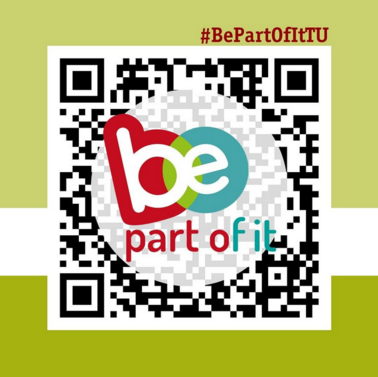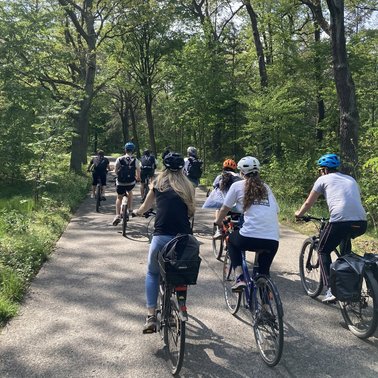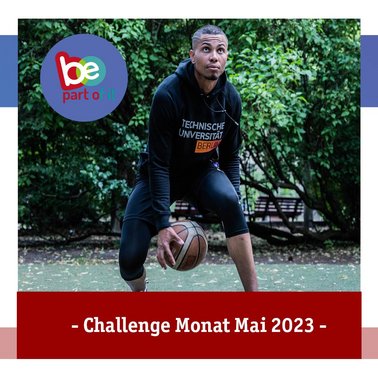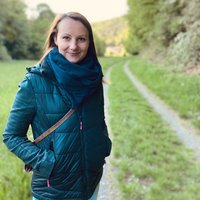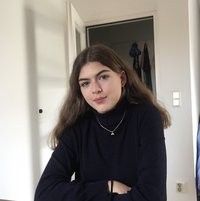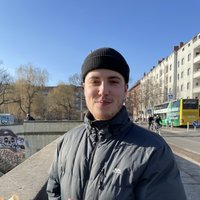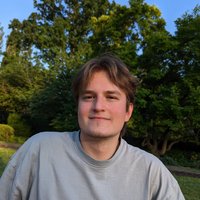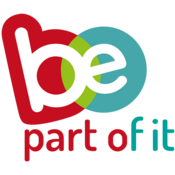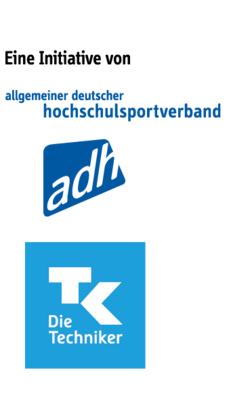The project: Be part of it
Be Part Of It was a participatory campaign for student health promotion by TU-Sport and part of the initiative "Bewegt studieren - Studieren bewegt! 2.0" initiative of the adh and the TK.
The aim of the project was to challenge TU students with sporty challenges, to network with each other and to make them familiar with their campus. To make the offer as low-threshold as possible and to pick up students in their everyday life, the communication was mostly done via social networks, especially Instagram.
In the following, we would like to review the 3 project years (2020-2023):
Review Statement:
I am pleased that the project was able to create an offer for students to more actively shape their daily study routine in the challenging times of the last 3 years. Through the active involvement of students in the project work and the consistent communication via social media, many students were reached and made aware of the project. For the future, the challenge lies in how virtual engagement can also be transformed into active participation on site - the foundations for this were laid in the project." - Julius Kühn (Consultant Health Management TK)
Baseline situation / Idea:
To strengthen the presence of TU sports, the health-oriented TU Morning Challenge for employees and students was created in September 2019. In addition to six taster offers, there were daily challenges on the topics of everyday movement, coordination and relaxation. Participants were to be motivated to develop their own morning routine to start the day moving. Based on this, the idea for "be part of it" was developed as part of the initiative "Bewegt studieren - studieren bewegt 2.0". The health promotion programs offered at the TU Berlin are currently geared primarily toward employees. For students, there are only a few small projects that address this area."be part of it" is intended to pick up precisely at this point.
Contents and goals:
As a participatory campaign for exercise-oriented health promotion, "be part of it" is aimed at all TU students. At the core of the project are sporting challenges, especially in the form of the annual Challenge Month, devised by students and mastered by students. Thus, the project is characterized by participation and co-design. In order to enable all TU students to participate, the challenges are formulated in such a way that they can be mastered as independently of time and place as possible and are taught bilingually and digitally. This concept enables students who are otherwise not reached by university sports offerings to participate in exercise-oriented health promotion.
Project Partners:
Students were able to influence the project and participate in actions in a variety of ways. On the one hand, through the project steering group, which consists of three to five committed TU students who give ideas and feedback, network for the project and accompany or co-organize actions. On the other hand, the connection to student initiatives that promote the project and enter into cooperations with TU Sport. Of course also the participating students, who submit challenges, take part in actions and win prizes for their participation. The latter is the most important form of student participation in the project. When planning the annual challenge month, the idea suggestions as well as the later feedback of the students on the challenges are basic requirements in order to orient the project as close as possible to the students' everyday life. In terms of physical activity promotion, several actions have stood out that have been particularly popular. These include: athletic challenges in the form of small workouts, joint bicycle tours, campus actions for an active break, and community challenges to increase everyday movement.
TU internal partners of the project were the press office, the central library and various student and official organizations at TUB. Such collaborations are enormously important for the project, because besides the obvious - they enable actions - which significantly increase the reach of the project.
Achievements and Challenges:
The main challenge of the project was the accessibility of the students, especially during the pandemic. Thus, one of the most important learnings from this project is the beneficial effect of face-to-face contact in the presence of the participating students and of the students among themselves. Nevertheless, during the course of the project, many online mediation channels (internal university newsletters, circular e-mails, courses on the internal university learning platform) were tried out. Only social media, especially Instagram, turned out to be really successful. The project's biggest success, the annual Challenge Month, also ran via Instagram. The month has been held regularly since the summer semester of 2021 and has been positively received by the students. This involves announcing daily challenges on various health-related topics via Instagram during the week for a month, in which students can participate. Weekly and at the end of the month, prizes and goodies are raffled among actively participating students. Other successful actions of the project usually took place in attendance, such as the semester-long bike ride. There was also a lot of potential in the internal university networking of the project. However, contact with students and official organizations at TU Berlin often proved to be difficult and challenging.
Conclusion, evaluation, perspective:
In conclusion, "be part of it" can be seen as a kind of pilot for a future SGM. Basic questions, such as "How can students best be reached?" and "Which stakeholders are necessary for implementation?" can now be answered. Communication via social media was the most successful means, as already pointed out. In addition to the student initiatives, which are part of the target group, we see the press office as an expert* in the field of communication as a stakeholder. In the future, integration into teaching will be another essential success factor, which unfortunately has not yet been achieved in the project.
At a technical university like the TU Berlin, it is of great importance to create awareness for health promotion among students. The location of Berlin, with its variety of offers, represents a special feature in this regard. Winning students for internal university activities in this setting is challenging and should not be underestimated. The challenge format is a good means of choice but should be supplemented by other incentives.
The project was sponsored by Techniker Krankenkasse and the Allgemeiner Deutscher Hochschulsportverband (adh) as part of the "Bewegt studieren - Studieren bewegt 2.0" initiative.
